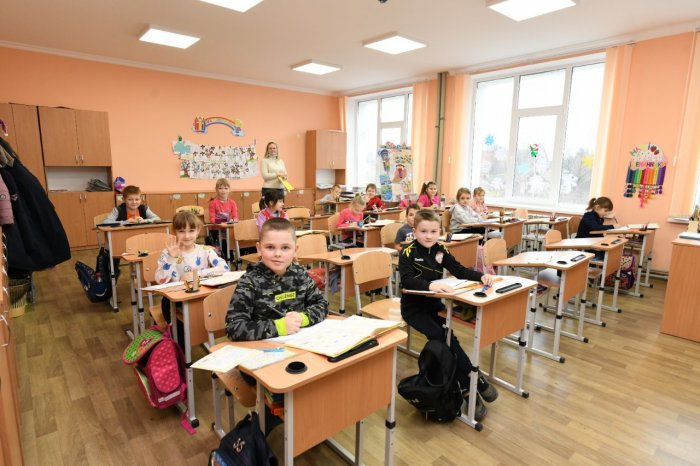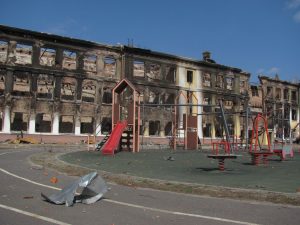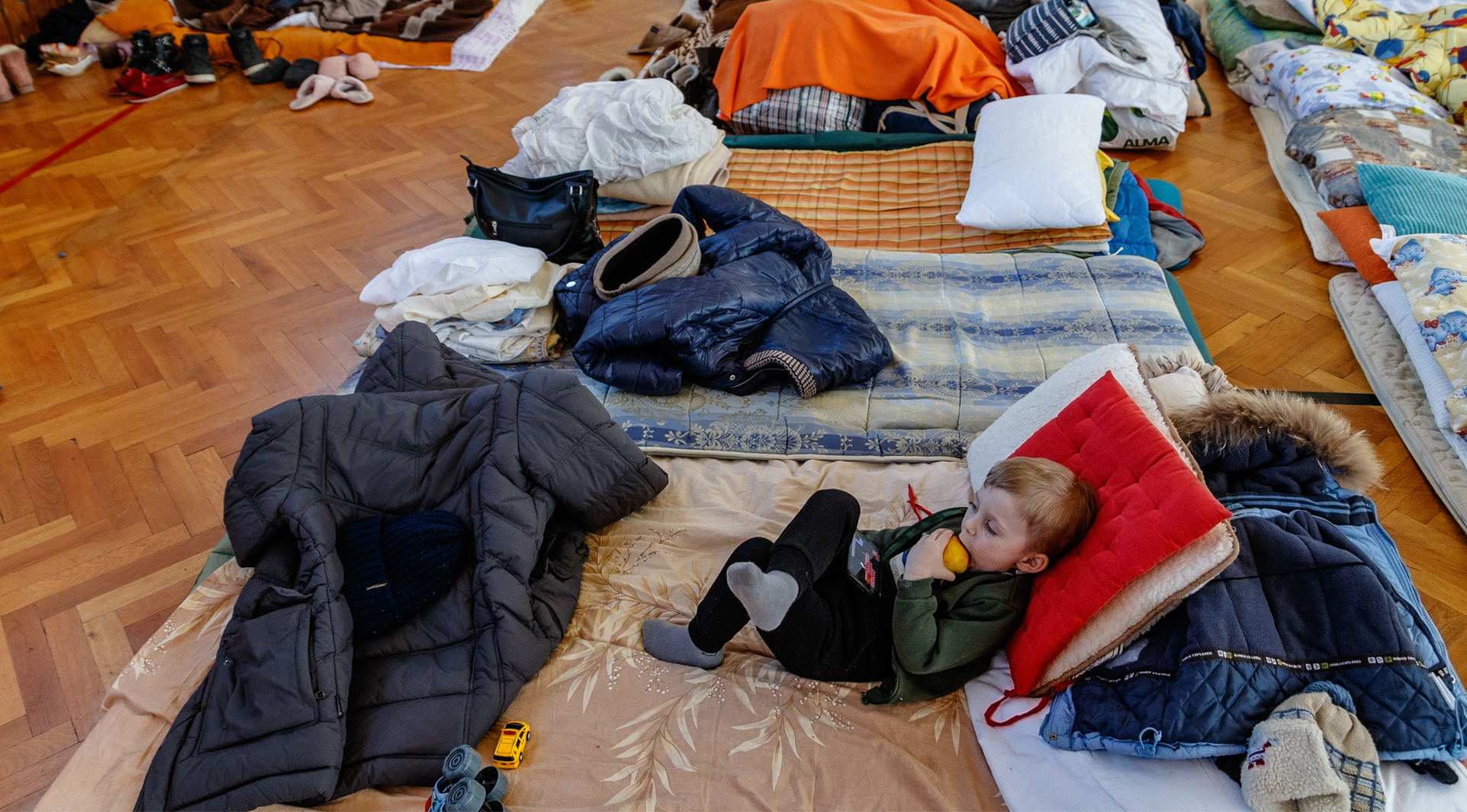How do we count the education impacts of the war in Ukraine?
This NORRAG Highlights is cross-posted on the UCL Centre for Education and International Development (CEID) blog. In the post, Rodie Garland, a doctoral candidate in the Department of Education, Practice & Society (EPS) at UCL IOE looks at the impact of the war in Ukraine on its education system and what data is available to measure the effects on education.
When a country is invaded, what are the effects on education – and how can we know? Given the scale of the assault on Ukraine, there is a sense in which it is impossible to assess these effects in their entirety – nationally, socially, and individually. If you’ve fled your home, leaving behind your family’s livelihood and, perhaps, family members; if you’ve been without shelter or water or food; if you’ve suffered trauma – then of course your education will suffer. But this impact is difficult to measure and may not be your foremost concern. The reliance on measurable data to support policy in education and international development is indeed recognised as controversial (see, for example, the work of Sotiria Grek). At the same time, missing elements in the existing data present obstacles to ensuring inclusive and equitable education: something the NORRAG Missing Data project aims to address. We also need to bear in mind that data, and how we use them, is not neutral. When we work with education data, we need to be asking what it is that we are and are not measuring, in what contexts, and with what purposes and consequences.
With all this in mind, there is much data currently being collected that is useful in giving us at least a partial picture of the education impacts of the war in Ukraine. A daily tally is kept of the numbers of internally displaced persons (IDPs) and those leaving the country (respectively 7.7 million and 5.2 million as of 25 April), presenting a top-line indication of the level to which everyday life is disrupted. It is worth pointing out that for many Ukrainians, this did not begin on 24 February: conflict has been ongoing in the east since 2014, with an estimated 1.5 million people internally displaced before the recent invasion. Though none of these figures are perfect, as individuals slip through the cracks in war, they do disproportionately represent women and children: it was estimated, as of 1 April, that 999,500 school-aged children were internally displaced. By 18 April, Save the Children warned that two-thirds of all children in the country had been uprooted from their homes: clearly, an upheaval with enormous consequences, including for schooling.
Along with displacement come the concerns of basic survival that make any kind of learning difficult. Depending on what data are collected, when and by whom, education may or may not feature among these concerns. A survey of IDPs asks adults to report their current needs, selecting from a list of options; the needs reported as most pressing are financial and health-related, with others including clothes and shoes, transportation, information or means of communication (e.g., internet connectivity), food, accommodation and hygiene. Since much education is currently taking place online (see below), and since over half of displaced households contain children, we can speculate that the issues reported here indicate educational impacts.

Artem Hetman / UNDP Ukraine
Other data do seem to place more of an emphasis on children and their schooling, although reliable systems for monitoring and tracking children have also been severely disrupted. Throughout the country, children are experiencing separation from parents, the destruction of family units and the breakup of their communities. The Global Protection Cluster reports that the main issues faced by those living in shelters are a lack of rooms for family units and lack of gender separation, as well as overcrowding, lack of water and lack of electricity. It also identifies the main risks for this population which, alongside exposure to violence, shelling and mines, and family separation, include lack of access to education. Overall, 3.3 million children are estimated to need ‘education in emergency’ assistance.
This level of disruption is caused not only by displacement, but by the destruction of educational institutions themselves. Evidence from eye witnesses, key informants and satellite imagery allows for frequent updates on the total number of educational facilities damaged – 1,237 as of 21 April, with over 9% of educational institutions destroyed completely. There are also reports of at least three instances of schools being used for military purposes, and 14 where they have been used as shelters or for other humanitarian purposes. Using schools for military purposes turns them into military targets, endangering children’s lives, not to mention the damage to educational infrastructure.
While little of the data currently being collected mention gender differences, undoubtedly there are specific risks to girls, as illustrated by the awful news reports of the rape and murder of women and girls in Bucha. While women and girls will not be the only victims, the Global Protection Cluster reports that gender based violence (GBV) is a reality for those who are internally displaced. This comes amidst increased military presence, lack of access to safe shelter and basic goods, and a high risk of trafficking at borders, in a country where even before the war 67% of women reported experiencing some form of GBV after the age of 15. At the same time, there is a warning that the widespread proliferation of light weapons is likely to increase the risk of school-aged youngsters being drawn into armed groups, something that is perhaps most likely to affect boys.
And yet, while the war rages, schools open wherever they can, for face-to-face or online learning. One of the many ‘unprecedenteds’ of the COVID pandemic is a situation where a country like Ukraine now has a developed infrastructure for remote learning, while its children have experience of turning to technology for their education. The Ukrainian Ministry of Education and Science (MON) reports that as of 21 April, nearly 90% of schools are operating in some form. Over 12,000 secondary schools have introduced remote learning, with over 3.7 million students taking part in some kind of schooling (out of a total of 14,000 schools with 4.2 million students, excluding Crimea, Luhansk and Donetsk). In 14 of 25 regions, all educational institutions are operating, via remote learning; three regions are running remote, blended or face-to-face learning; and at least some schools are running remotely in remaining regions. Kindergartens operate in 15 regions, while most vocational, professional and higher education institutions are running where the local situation permits.
 Many children who have left their homes are either taking part in remote learning, or accessing schools in the places where they now live. The MON puts the figure for the latter group at nearly 87,000 (21 April), a growing number. Levels of online learning will vary between regions, but to give some perspective (albeit anecdotally), a teacher contact in Kyiv reports that around 70-80% of students at her school are attending remote lessons. Schools were asked to report data on online attendance up to 14 April, which suggests that more concrete information on participation might soon become available. She also tells me that of those learning remotely, around 85% are in Ukraine, with 15% elsewhere. Indeed, Education Minister Serhiy Shkarlet claims that Ukrainian pupils abroad are prioritising online learning in their home schools, and want to complete the school year with their own teachers. Most Ukrainian students in the Netherlands, he says, are choosing remote learning, with special classes and even schools being set up for them. Ukraine has also asked members of the Standing International Conference of Inspectorates to disseminate information about Ukraine’s online platforms to enable children to access Ukrainian education wherever they are. At an event held recently by NORRAG’s partners the International Parliamentary Network for Education, Serhiy Shkarlet underlined the MON’s work to ensure that learning continues. Such education offers a pathway of resistance: a subject for a future blog post.
Many children who have left their homes are either taking part in remote learning, or accessing schools in the places where they now live. The MON puts the figure for the latter group at nearly 87,000 (21 April), a growing number. Levels of online learning will vary between regions, but to give some perspective (albeit anecdotally), a teacher contact in Kyiv reports that around 70-80% of students at her school are attending remote lessons. Schools were asked to report data on online attendance up to 14 April, which suggests that more concrete information on participation might soon become available. She also tells me that of those learning remotely, around 85% are in Ukraine, with 15% elsewhere. Indeed, Education Minister Serhiy Shkarlet claims that Ukrainian pupils abroad are prioritising online learning in their home schools, and want to complete the school year with their own teachers. Most Ukrainian students in the Netherlands, he says, are choosing remote learning, with special classes and even schools being set up for them. Ukraine has also asked members of the Standing International Conference of Inspectorates to disseminate information about Ukraine’s online platforms to enable children to access Ukrainian education wherever they are. At an event held recently by NORRAG’s partners the International Parliamentary Network for Education, Serhiy Shkarlet underlined the MON’s work to ensure that learning continues. Such education offers a pathway of resistance: a subject for a future blog post.
One unknown is what becomes of those children who have crossed into Russia. Russia claims that over 863,600 people, including more than 158,170 children, have crossed into its territory since 24 February. While the UN cannot verify these figures, it estimates that as of 17 April, over 522,000 people have travelled to the Russian Federation. There are reports that in some cases people have been subject to forcible deportation, and concerns that Russia is intending to implement the enforced adoption of some Ukrainian children. In any case, those crossing into Russia will include students at all levels of education, and as yet it is hard to guess at the consequences for their educational futures.
Even while schooling continues for the majority of children, we currently know little of how children and adults are experiencing this. International evidence from the pandemic points to inequalities, including gender inequalities, in who accesses online learning. And for children living through war, there are issues that technology alone cannot solve. The very nature of education will need to change: one teacher reports taking her students through breathing exercises to manage their anxiety, while mine risk education is now critical, according to the Education Cluster. Alongside this, it states, must come training for teachers on life skills education, and emotional and psychosocial support – and help for them in their role as care-givers as well as educators. Children attending their usual school between air raids, or adjusting to life in another country, whether in a new school or connecting with familiar faces online, will have vastly different experiences. Understanding all of these, with the help of monitoring and evaluation techniques like AGEE framework, associated with CEID, will help address some of the issues of missing data, and is part of understanding the costs of war.
Rodie Garland is a doctoral candidate in the Department of Education, Practice & Society (EPS) at UCL IOE, where her research focuses on home-school relations. She holds a BA in Russian. The research for this blog was funded by EPS and linked to the work of the AGEE project.

